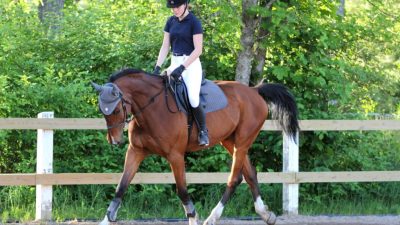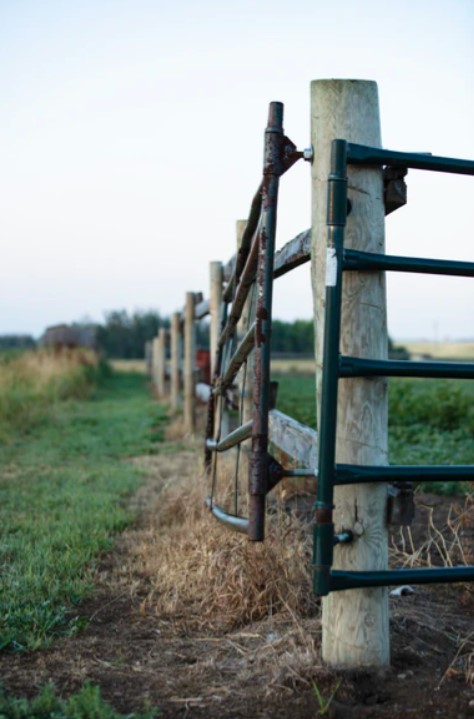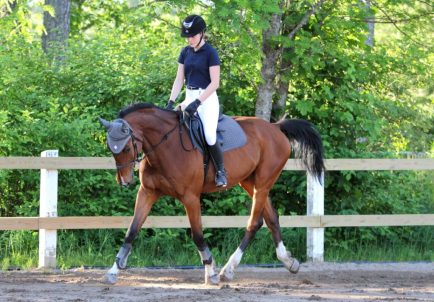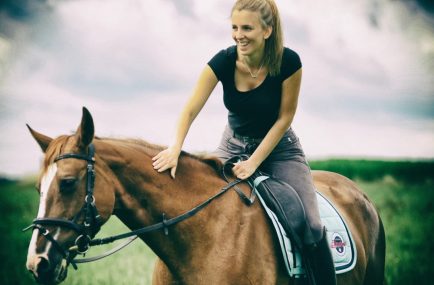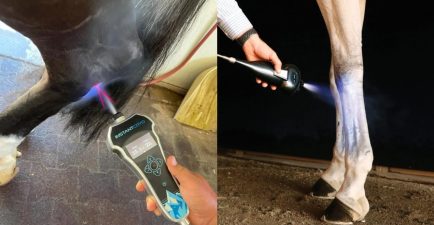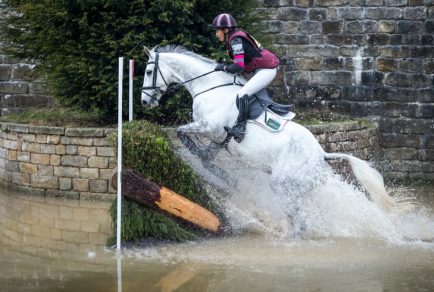Ever seen a horse tied to a hitching rail and thought you’d like to give it a try? We’ve got everything you need to know about building a hitching rail for horses!
We’ve got top hitching rail construction tips for you, whether you’re building a hitching post or hitching rail. We’ll also find out the best material for building a hitching rail for horses. And finally, we’ll take a look at how to tie the right knot to secure your horse safely, every time.
What Is A Hitching Post Or Hitching Rail?
A hitching rail is a sturdy wooden horizontal bar, designed to allow riders to tie their horses up securely. The horse is tied up by either looping the rope around the rail or through a metal ring attached to the rail. A hitching post is similar but is a vertical post that has room for fewer horses than a rail.
Hitching rails and posts are used in stable yards and outside barns. They give horse owners a safe place to restrain their horses. It is also common to find hitching rails and posts along long-distance trails, at picnic and recreation sites, and near to facilities such as public toilets.
How Easy Is Building A Hitching Rail?
Building a hitching post or rail for horses is a simple task that most DIY enthusiasts will be able to manage! However, the hitching post or rail must be built securely to avoid breakages. You don’t want a rail that comes out of the ground as soon as the horse tries to walk away!
If you think that building a hitching rail for horses is beyond your capabilities, a handy person or local tradesperson should be able to help you. Alternatively, you can build a simple hitching point by attaching metal tiering to an existing post, fence, or barn wall.
What Is The Best Hitching Rail Height?
The recommended height for hitching rails is 42 inches above the ground. At this height, the rail should be at about chest height for most medium to large horses. Smaller horses and ponies will need a slightly lower hitching rail height to prevent them from ducking under the rail.
If you are constructing a hitching post, the post itself can be taller than a hitching rail but the hitching ring should be placed at a height of 42 inches.
Best Materials For Building A Hitching Post Or Rail
Traditionally, hitching posts are built from timber. This is the easiest material to work with if you are building your own hitching rail. If you treat the timber with an animal-safe preservative the rail will last for a long time. Some chew stops will help to prevent the horses from chewing it!
Hitching rails can also be constructed from metal such as welded steel. This can be a long-lasting and durable option, particularly if you live in an area with a high amount of rainfall. Pre-made metal hitching posts can be bought from local suppliers, or a metal fabricator may construct a bespoke hitching rail for you.
How To Build A Hitching Post Or Rail
If you are building your own hitching post or rail, it is important to take into account the following points:
- Securing The Posts
Whether you are building a hitching rail or hitching post, you will need to secure sturdy wooden posts into the ground. These posts should be about 8 feet long. Remember they need to stay in the ground if the horse pulls backward!
Dig a deep hole at least 4 feet deep and put your post in the hole, making sure it is vertical. Use a concrete mix to secure the post into the hole. Leave to dry before moving onto the next stage.
- Installing A Hitching Rail
Firstly check that your upright posts are level and approximately 40 inches in height. You may need to trim the tops slightly to get this right. Place a long, thick pole on top of the upright posts, allowing it to hang about 6 inches off each end. This is essential to ensure that the horse cannot move the lead rope along the rail and onto the upright post.
Secure the hitching rail to the upright posts with 6-inch screws. You can also place short braces across the corners to keep your structure rigid and secure.
- Installing A Hitching Post
If you want to secure your horse to an upright post, you will need to attach metal tiering to the post. This should be placed close to the top of the post. This will help prevent the horse from wrapping the lead rope around the post.
The tie ring must be secured to the hitching post with bolts. Make sure that the ends of the bolts are recessed into the post, to prevent injury to your horse.
Original article: Building A Hitching Rail For Horses – Best Horse Rider
www.royalequestriancollection.com – check our website to purchase and enjoy our products for your horses and you.











